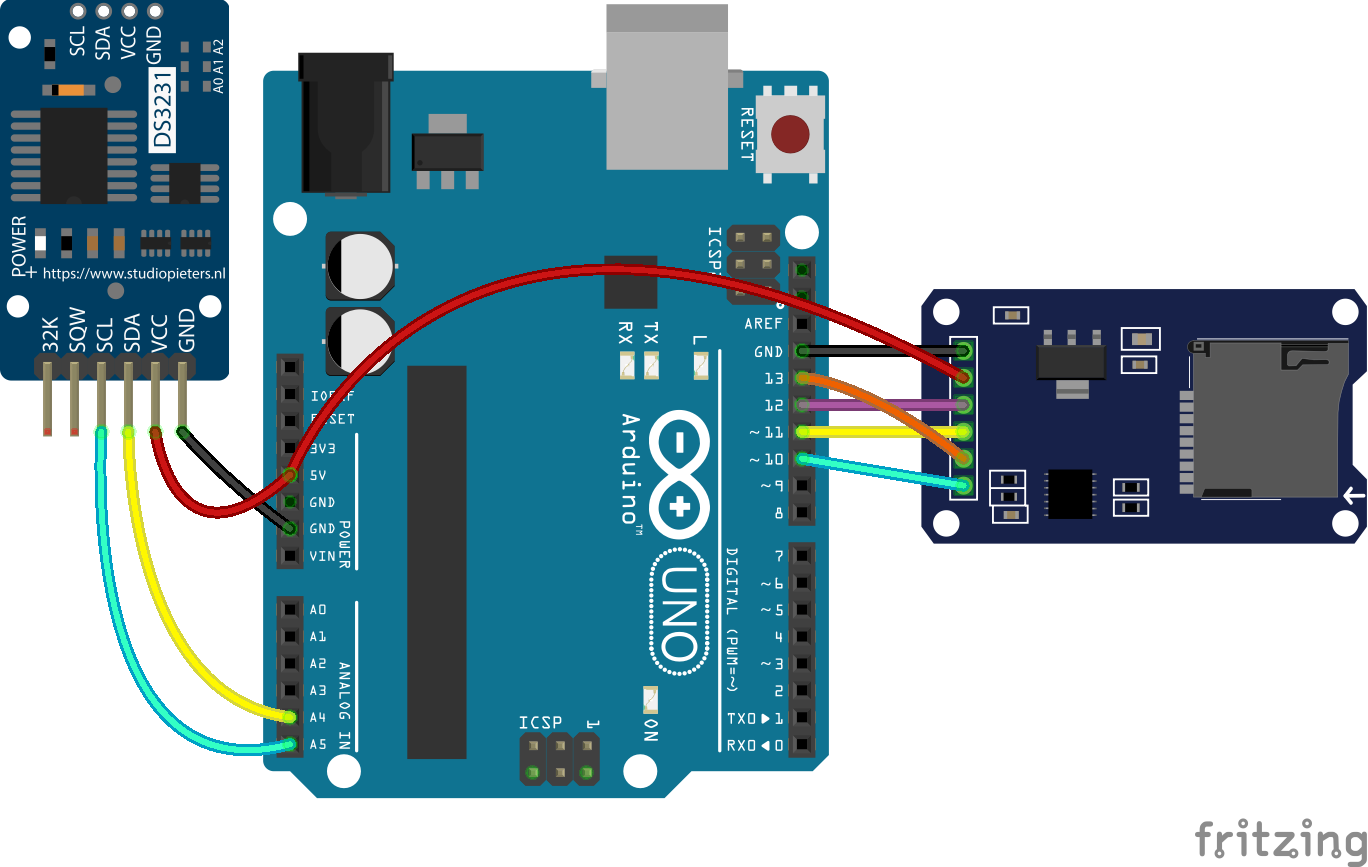

- #Arduino nano pinout sd card how to#
- #Arduino nano pinout sd card pro#
- #Arduino nano pinout sd card code#
According to that, some other interrupt can mess me.Īnother chart: Orange is the counter calculated by the ISR (what is now precise), and the blue is without timer, just polling. Orange is the one calculated in the ISR, blue is counted by polling. I raced one counter what is counting from the ISR, and the other, what is counting in the if statement. If the counter is in the ISR, then it increments properly.
#Arduino nano pinout sd card code#
Original code but make the counter global and volatile and increment it in the ISR instead of loop() I added cli() and sei() in the statement, but did not has effect: If another interrupt happens after/during your sprintf statement or while data is being written to the SD card Do you want to record elapsed ms or the number of analogRead()s ? Think very carefully about what values you are displaying. If it is wider than uint8_t you will need to access atomically for printf(). I would maintain the volatile ms_counter in the ISR(). You may miss an intervening dataWrite before you clear it. The analogRead() will take many us, sprintf() will take a few us, println() is minimal (unless the buffer is full)

Sprintf(buf, "%u\t%u\t%u", analogRead(sensorPin), dataWrite, counter) So you will not miss any Timer2 COMPA IRQs. Even if the SD or Arduino code has an "atomic" sequence it will never be as long as 1ms. Timer2 ISR()s will operate with no problem. Any SD Card operation will take place in the foreground. My question is, why is the timer runs slower at the first time? Sd module has various applications such as data. The sd card modules are connected via spi to the arduino, esp8266 or esp32 microcontroller. First lets take a look at the sd card module. I even replaced the flag to a byte variable, and I had increased it in the timer2 interrupt, to check the dataloss, but no lost of data. The sd and micro sd card modules allow you to communicate with the memory card and write or read the information on them. In that case I get the proper value, the counter is around 60.000. Then I rearranged the program, now I am not writing the data to the SD card every milisec, only at the end of the measurement. But, the counter only reaches around 54.000. In that case, I would expect, that in 1 minute the counter value on the SD card should be somewhere around 60.000. I set up a stopwatch, and I measure 1 minute. Sprintf(buf, "%u\t%u", analogRead(sensorPin), counter)
#Arduino nano pinout sd card pro#
SD Card Pin Arduino Nano Arduino Pro Mini Arduino Uno Arduino Mega GND: GND: GND: GND: GND: VCC: 5V: 5V: 5V: 5V: MISO: 12: 12: 12.
#Arduino nano pinout sd card how to#
It caused me oversampling, so I wanted to make the writing slower, so I set a 1ms timer, like this: In this tutorial you learn how to use the SD card module for your Arduino, ESP8266 and ESP32 microcontroller board and also how to build a Temperature Logger. Previously I was using polling when the program has reached the proper code line, then the data has saved to the SD card. I'm using mega328p avr in a nano shield, I read in value from analog pin, then save it into sd card. We don’t advise it.I wanted to validate a 1ms timer, but I got a very strange result. Note:- Do not supply voltage via the 5V or 3.3V pins, it bypasses the regulator and can damage the board. A properly configured gradient can read the IOREF pin voltage and can work with 5V or 3.3V to select a suitable power source on the output or enable the voltage translator on the output. IOREF:- On the Arduino board, this pin provides voltage references, with which the microcontroller operates.3V3:- This pin gives the output of 3.3V.You can use this pin to give a 5V supply to the sensor. 5V: – This pin gives the output of 5V.If the supplying voltage via USB connection or the power jack, you can access it through this pin. Vin:- The input voltage to the Arduino board when it’s using an external power source you can supply voltage through this pin.


 0 kommentar(er)
0 kommentar(er)
